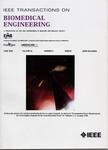版权所有:内蒙古大学图书馆 技术提供:维普资讯• 智图
内蒙古自治区呼和浩特市赛罕区大学西街235号 邮编: 010021

作者机构:Vanderbilt Univ Dept Biomed Engn Nashville TN 37235 USA Vanderbilt Univ Med Ctr Dept Neurol Surg Nashville TN 37232 USA Johns Hopkins Med Inst Dept Radiol & Radiol Sci Baltimore MD 21205 USA
出 版 物:《IEEE TRANSACTIONS ON BIOMEDICAL ENGINEERING》 (IEEE Trans. Biomed. Eng.)
年 卷 期:1998年第45卷第5期
页 面:620-630页
核心收录:
学科分类:0831[工学-生物医学工程(可授工学、理学、医学学位)] 0808[工学-电气工程] 08[工学]
基 金:NHLBI NIH HHS [T32 HL07712] Funding Source: Medline NINDS NIH HHS [NS28602] Funding Source: Medline
主 题:A-mode ultrasound computer-assisted surgery detection and localization fiducial markers image-guided surgery registration stereotactic neurosurgery ultrasound
摘 要:Fiducial markers are reference points used in the registration of image space(s) with physical (patient) space. As applied to interactive, image-guided surgery, the registration of image space with physical space allows the current location of a surgical tool to be indicated on a computer display of patient-specific preoperative images. This intrasurgical guidance information is particularly valuable in surgery within the brain, where visual feedback is limited. The accuracy of the mapping between physical and image space depends upon the accuracy with which the fiducial markers were located in each coordinate system. To effect accurate space registration for interactive, image-guided neurosurgery, the use of permanent fiducial markers implanted into the surface of the skull is proposed in this paper. These small cylindrical markers are composed of materials that make them visible in the image sets. The challenge lies in locating the subcutaneous markers in physical space, This paper presents an ultrasonic technique for transcutaneously detecting the location of these markers. The technique incorporates an algorithm based on detection of characteristic properties of the reflected A-mode ultrasonic waveform. The results demonstrate that ultrasound is an appropriate technique for accurate transcutaneous marker localization. The companion paper to this article describes an automatic, enhanced implementation of the marker-localization theory described in this article.